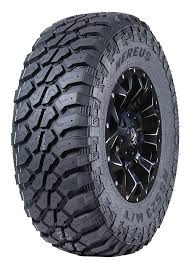How Often Should You Replace Nereus Tires in Nova Scotia?

Tires are one of the most essential parts of your vehicle, and knowing when to replace them can be tricky. Nereus tires, known for their durability and performance, are no exception. In Nova Scotia, the weather can be extreme, with roads changing from icy in winter to slick in spring and fall. This makes tire maintenance even more important. But how do you know when it’s time to replace your Nereus tires in Nova Scotia? Let’s break it down and help you understand when to make that important decision.
Check the Tread Depth of Nereus Tires in Nova Scotia
One of the most important factors in knowing when to replace your tires is the tread depth. The tread refers to the pattern on the tire’s surface that makes contact with the road. It helps with grip, especially on wet or icy roads, which are common in Nova Scotia.
As tires wear down, the tread becomes shallower, and they lose their ability to grip the road. Most tires, including Nereus tires, have wear bars built into the tread. When the tread wears down to the same level as the wear bars, it’s time to replace your tires. For optimal performance, you want the tread depth to be at least 1/16th of an inch (about 1.5 mm).
Age of the Tires
Even if your Nereus tires seem to have plenty of tread left, age is another key factor in determining when it’s time for a replacement. Most tire manufacturers advise replacing your tires every six years, and no later than ten years, regardless of tread wear. The rubber in tires naturally degrades over time, which can reduce their performance and safety, even if the tires look good.
In Nova Scotia, where temperatures can range from freezing in the winter to sizzling and humid in the summer, this aging process can be accelerated. Cold temperatures can make the rubber more brittle, while heat can cause it to soften. Therefore, if your tires are approaching the 6-year mark or older, it might be a good idea to start considering a replacement.
Look for Visible Damage
Even if the tread looks fine, physical damage to your tires can indicate that they need to be replaced. Common types of damage to look for include:
- Cracks or Bulges: These can occur when the tire’s sidewall is damaged, often due to hitting a pothole or curb. Bulges are particularly dangerous, as they can cause the tire to blow out.
- Punctures: While small punctures can sometimes be repaired, large punctures or multiple punctures in the same tire may require a replacement.
- Uneven Wear: If you notice that one part of your tire has worn more than others, it could indicate alignment issues, suspension problems, or even issues with inflation. This uneven wear can also lead to reduced tire performance and may mean it’s time for new tires.
Driving Conditions in Nova Scotia
Nova Scotia’s weather and road conditions can put a lot of stress on your tires. In the winter, snow, ice, and road salt can wear down tires faster. In the warmer months, rain and varying road conditions can also affect tire longevity. If you live in an area with frequent snow and ice or drive a lot on gravel roads, your tires may wear out more quickly.
Nereus tires in Nova Scotia are built to withstand various conditions, but constant exposure to harsh weather can reduce their lifespan. If you drive a lot during these challenging seasons, it’s even more important to keep track of your tire condition and replace them sooner if needed.
Get a Professional Opinion
If you’re unsure about when to replace your Nereus tires, don’t hesitate to get a professional opinion. A certified mechanic or tire specialist can inspect your tires. During an inspection, they’ll check the tread depth, sidewalls, and overall condition of the tire. They’ll also look for signs of uneven wear that could indicate alignment or pressure issues.
Additionally, they can assess whether minor damage can be repaired or if the tire needs to be replaced entirely. A professional can also provide advice on how to maximize the remaining life of your tires if they’re still in good shape.
Conclusion
Replacing your Nereus tires in Nova Scotia depends on several factors, including tread depth, tire age, visible damage, and your driving conditions. Remember, tires are a critical part of your vehicle’s safety system, so don’t wait until it’s too late. If your tires have any signs of wear or are approaching their recommended age, it’s time to replace them. Stay safe, and keep your vehicle running well with the right tires at the right time!
Check out Bulldog Tire today and get the perfect tires for your vehicle.





